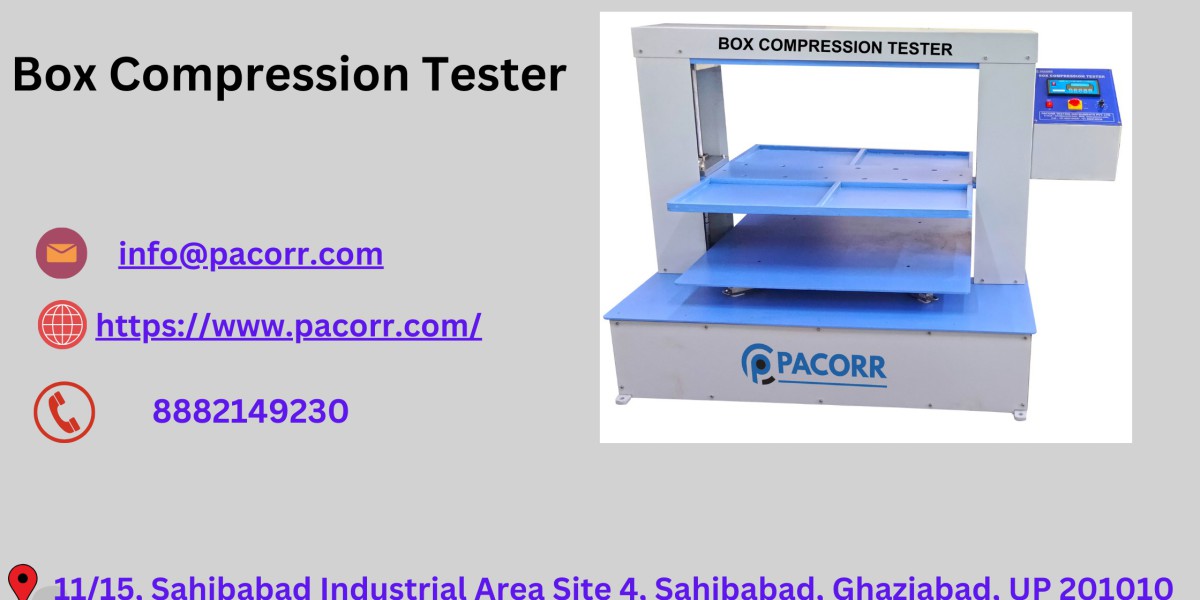Introduction to Box Compression Testing
In the world of packaging, ensuring that products are delivered safely to consumers is of utmost importance. One of the critical tests used to guarantee this is the Box Compression Test (BCT). This test assesses the strength and durability of boxes and cartons, providing valuable insights into their capacity to withstand various pressures and loads during transit and storage.
Why Box Compression Testing is Essential
Box Compression Testing is vital for several reasons:
- Protection of Goods : The primary role of packaging is to protect its contents. BCT ensures that the boxes can endure stacking, shipping, and handling stresses without compromising the integrity of the goods inside.
- Compliance with Standards : Many industries, especially those dealing with food, pharmaceuticals, and electronics, must adhere to strict packaging standards. BCT helps in meeting these regulatory requirements.
- Cost Efficiency : By understanding the maximum compression a box can handle, manufacturers can optimize packaging materials and design, leading to cost savings without sacrificing quality.
How Box Compression Testing Works
The Box Compression Tester involves placing a box between two parallel plates and applying a compressive force until the box fails or deforms significantly. The key parameters measured during this test include:
- Maximum Compression Load : The highest force the box can withstand before collapsing.
- Deformation : The extent to which the box deforms under the applied load.
- Failure Point : The load at which the box fails or shows signs of significant structural damage.
Equipment Used in Box Compression Testing
At Pacorr Testing Instruments, we offer state-of-the-art Box Compression Testers designed to deliver accurate and reliable results. Our equipment features:
- Precision Load Cells: For accurate measurement of compressive forces.
- User-Friendly Interface: Easy-to-use software for data collection and analysis.
- Robust Construction: Durable and reliable for consistent performance over time.
Applications of Box Compression Testing
Box Compression Testing is used across various industries, including:
- E-commerce: Ensuring that packaging can withstand the rigors of shipping and handling.
- Food and Beverage: Verifying that boxes can protect perishable items during transit.
- Pharmaceuticals: Maintaining the integrity of packaging for sensitive and high-value products.
- Electronics: Protecting delicate components and devices from damage.
Benefits of Using Pacorr's Box Compression Testers
Choosing Pacorr's Box Compression Testers offers numerous advantages:
- High Accuracy: Precise measurement of compression forces ensures reliable data.
- Customizable Settings: Adaptable to different box sizes and shapes.
- Data Analysis: Comprehensive software for detailed analysis and reporting.
- Durability: Built to withstand continuous use in demanding testing environments.
Conclusion
Box Compression Testing is an indispensable part of the packaging industry, ensuring that products reach consumers in perfect condition. With Pacorr's advanced testing equipment, manufacturers can confidently assess the strength and durability of their packaging, optimizing design and materials for cost-effective and reliable protection.
For more information on our Box Compression Testers and other testing instruments, visit pacorr.com.
FAQ: Box Compression Testing
1. What is Box Compression Testing?
Box Compression Testing (BCT) is a method used to determine the compressive strength of a box or carton. It measures how much force a box can withstand before collapsing or deforming significantly. This test is essential for assessing the durability and structural integrity of packaging materials.
2. Why is Box Compression Testing important?
Box Compression Testing is crucial because it helps ensure that packaging can protect its contents during shipping, handling, and storage. It also helps manufacturers meet industry standards and regulations, optimize packaging design and materials, and reduce costs by preventing over-engineering.
3. How is the Box Compression Test conducted?
The test involves placing a box between two parallel plates and gradually applying a compressive force until the box fails or shows significant deformation. Box Strength Tester Key parameters such as the maximum compression load, deformation, and failure point are recorded during the test.
4. What types of boxes can be tested?
Box Compression Testing can be performed on various types of boxes, including corrugated cardboard boxes, cartons, and other packaging materials used in industries like e-commerce, food and beverage, pharmaceuticals, and electronics.
5. What equipment is used for Box Compression Testing?
Pacorr Testing Instruments offers advanced Box Compression Testers equipped with precision load cells, user-friendly interfaces, robust construction, and comprehensive software for data collection and analysis. These features ensure accurate and reliable test results.
6. What are the benefits of using Pacorr's Box Compression Testers?
- High Accuracy: Ensures precise measurement of compression forces.
- Customizable Settings: Adaptable to different box sizes and shapes.
- Data Analysis: Provides detailed analysis and reporting capabilities.
- Durability: Designed for consistent performance in demanding testing environments.
7. Can Box Compression Testing help in reducing packaging costs?
Yes, by understanding the maximum compressive strength of a box, manufacturers can optimize the design and materials used, leading to cost savings without compromising the quality and protective capabilities of the packaging.
8. How does Box Compression Testing help in meeting industry standards?
Many industries have specific packaging standards and regulations to ensure the safety and quality of products during transit. Box Compression Testing helps manufacturers comply with these standards by verifying that their packaging can withstand the required pressures and loads.
9. How often should Box Compression Testing be conducted?
The frequency of Box Compression Tester depends on various factors, including changes in packaging materials or design, new product launches, and periodic quality control checks. Regular testing ensures ongoing compliance with industry standards and maintains packaging quality.
10. Where can I get more information about Box Compression Testing and Pacorr's testing instruments?
For more detailed information about Box Compression Testing and to explore Pacorr's range of testing instruments, visit pacorr.com or contact our customer support team.
What is Box Compression Testing?
Box Compression Testing (BCT) is a critical quality control procedure used to evaluate the compressive strength and durability of packaging materials, specifically boxes and cartons. This test helps determine how much weight and pressure a box can endure before it deforms or collapses. By performing BCT, manufacturers ensure that their packaging can protect products during shipping, handling, and storage.
Importance of Box Compression Testing
Packaging plays a vital role in product protection, especially during transportation and storage. The ability of a box to withstand compression forces directly impacts the safety and integrity of its contents. Box Compression Tester provides essential insights into the performance of packaging materials, allowing manufacturers to:
- Ensure Product Safety: Prevent damage to goods by verifying the strength of packaging.
- Meet Industry Standards: Comply with regulatory requirements and industry-specific packaging standards.
- Optimize Packaging Design: Improve material usage and design for cost-effective and efficient packaging solutions.
- Enhance Customer Satisfaction: Deliver products in pristine condition, maintaining brand reputation and customer trust.
How Box Compression Testing is Conducted
Box Strength Tester involves placing a box between two flat, parallel plates and applying a controlled compressive force until the box fails or shows significant deformation. The test measures:
- Maximum Compression Load: The highest force the box can withstand before collapsing.
- Deformation: The extent to which the box deforms under the applied load.
- Failure Point: The load at which the box fails or shows signs of significant structural damage.
Pacorr's Box Compression Testers
Pacorr Testing Instruments offers advanced Box Strength Tester designed to deliver precise and reliable results. Our equipment features:
- Precision Load Cells: For accurate measurement of compressive forces.
- User-Friendly Interface: Easy-to-use software for data collection and analysis.
- Robust Construction: Ensures consistent performance over time.
- Customizable Settings: Adaptable to different box sizes and shapes.
Applications of Box Compression Testing
Box Compression Testing is widely used across various industries, including:
- E-commerce: Ensuring that packaging can withstand the rigors of shipping and handling.
- Food and Beverage: Verifying that boxes can protect perishable items during transit.
- Pharmaceuticals: Maintaining the integrity of packaging for sensitive and high-value products.
- Electronics : Protecting delicate components and devices from damage.
Conclusion
Box Strength Tester is an indispensable part of the packaging industry, ensuring that products reach consumers in perfect condition. By using Pacorr's state-of-the-art testing equipment, manufacturers can confidently assess the strength and durability of their packaging, optimize design and materials, and ensure compliance with industry standards.








